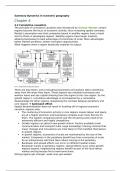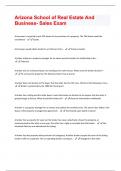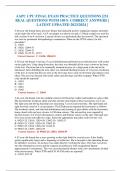Samenvatting
Samenvatting Dynamics in economic geography - Theories on Innovative and Sustainable Regions (GEO2-7012)
- Instelling
- Universiteit Utrecht (UU)
Dit document bevat een samenvatting van de tentamenstof van het boek Dynamics in Economic Geography. Niet het hele boek is samengevat omdat sommige hoofdstukken geen tentamenstof zijn. Hoofdstuk 4 t/m 9 moet je kennen en zijn hier samengevat. This document contains a summary of the exam material...
[Meer zien]














